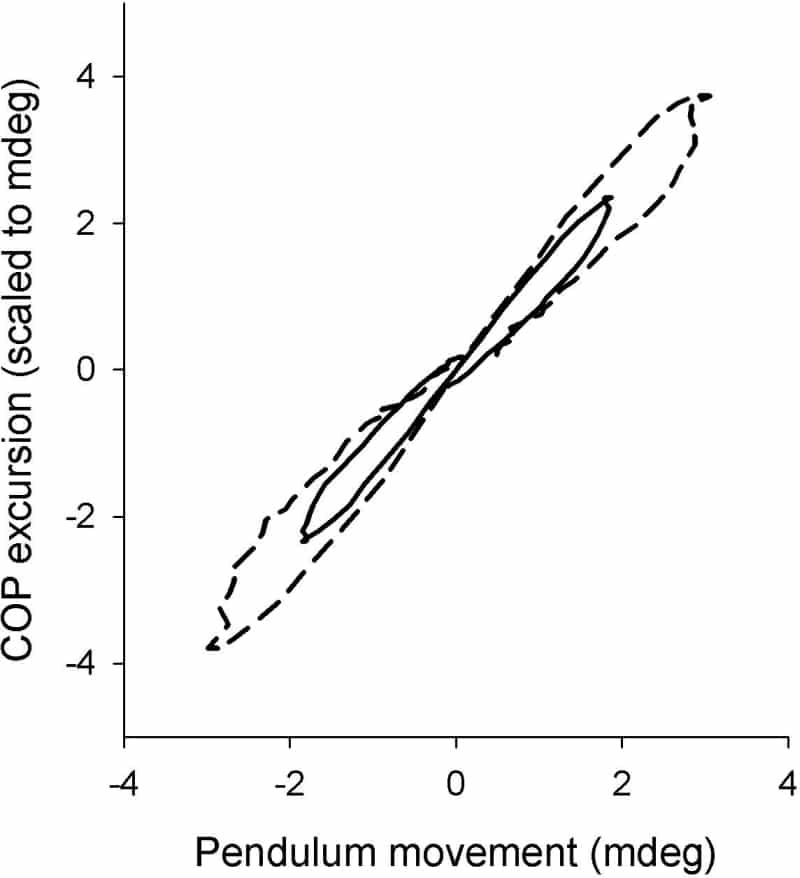Measurements were made of movements of the centre of pressure (COP) and of 14 body markers during periods of standing with eyes open or closed in two groups: young (mean age 29 years) and older (mean age 72 years). The measurements were used to assess whether an inverted pendulum model, with movement only at the ankles, adequately described the observations, and also whether the amplitudes and the nature of the movements differed between groups. The older group showed significantly increased medio-lateral movements of the COP compared to the young(root mean square amplitude in mdeg: 200 ± 15 (mean ± SEM) vs 153 ± 11 with eyes open and 216 ± 16 vs 165 ± 10 with eyes closed). There was no significant difference from the young group in the anterior-posterior plane. In the ML plane in the older group the pendulum model was significantly more successful than for the young in accounting for movements of the COP (r = 0.976 ± 0.003 vs 0.954 ± 0.006). In all conditions the pendulum model explained more than 93% of the variance of the position of the COP and more than 80% of the variance of body markers positions. However, there was also evidence for more complex movements in which hip angle changes were correlated with the angle changes at the ankles. In some subjects the hips were consistently used to move the centre of mass in the same direction as the ankles (‘hip strategy’, Nashner & McCollum, 1985) but, in contrast to previous studies (Day et al. 1993; Gatev et al. 1999), we also found subjects in whom the movements were correlated in the opposite direction. In older subjects ‘hip strategy’ was more common with eyes closed than with eyes open. Frequency of the pendulum movements was measured as described by Loram et al. (2001) and was not significantly different in young and old subjects (group means ranged from 0.295 to 0.334 Hz). Also following the methods of Loram et al. (2001, 2005) extracts were taken from pendulum angle records and from COP records around times of peak pendulum velocity and were averaged. Plotting the average pendulum movement against average COP excursion produced graphs that were very similar for old and young subjects (Fig. 1).
University College London December 2005 (2006) Proc Physiol Soc 1, PC20
Poster Communications: A comparison between young and older human subjects of movements of the body and of the centre of pressure during quiet standing
Birtles, Dierdre B; Bruce, Stuart A; Woledge, Roger C;
1. Institute of Human Performance, UCL, London, United Kingdom. 2. Centre for Applied Biomedical Research, Kings College, London, United Kingdom. 3. Department of Medicine for the Elderly, Conquest Hospital, Hastings, United Kingdom.
View other abstracts by:
Figure 1. Comparison of averaged movements of young (continuous line) and older (broken line) subjects. The example shown is for movements in the ML plane with eyes open.
Where applicable, experiments conform with Society ethical requirements.

